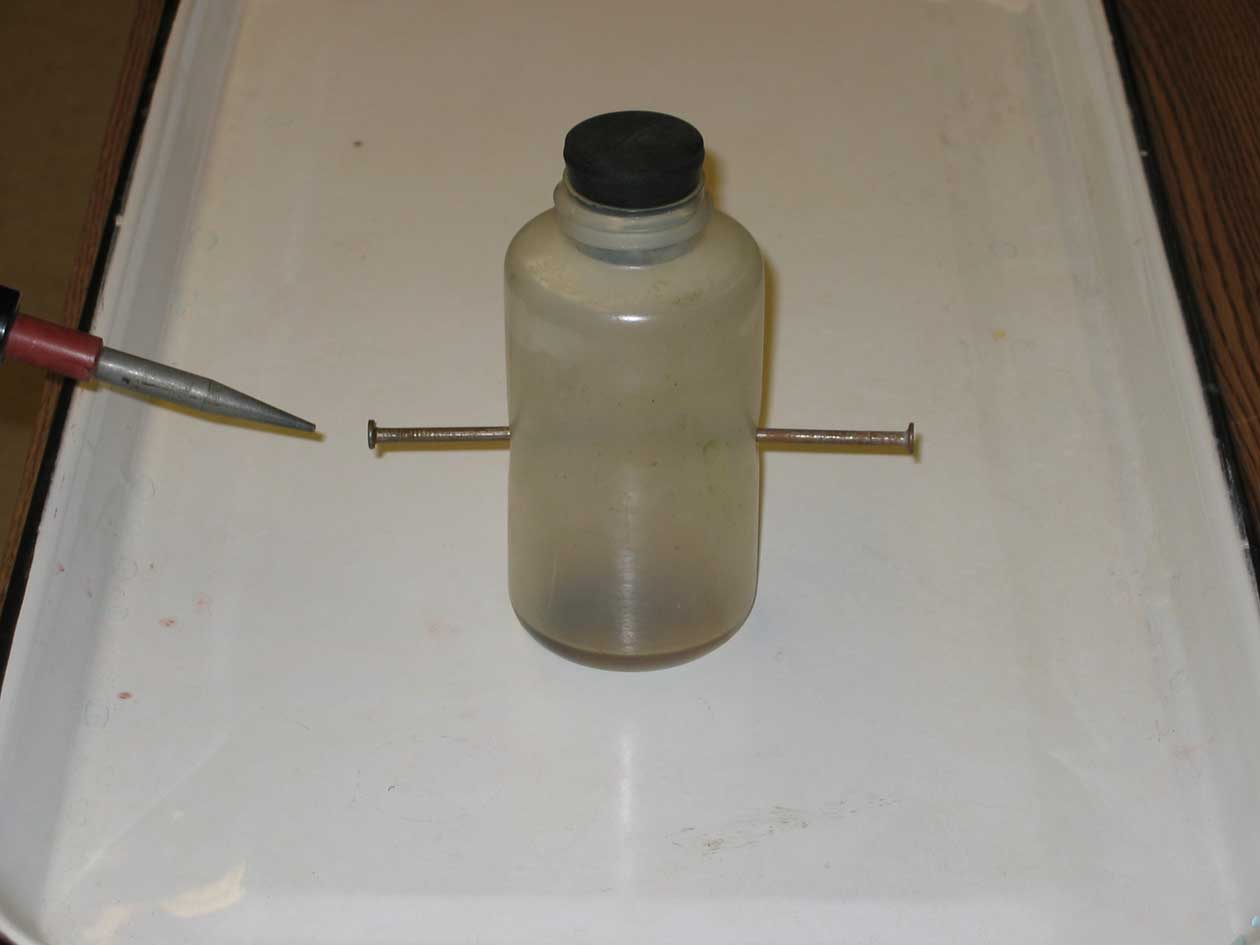 A "Weapon of Minor Destruction" is created using ordinary household items.
A "Weapon of Minor Destruction" is created using ordinary household items.
Ingredients: plastic bottle, rubber stopper, ordinary ethanol, two nails
Procedure: A complete recipe follows.
1. Obtain a plastic bottle with a tightly fitting rubber stopper.
2. Pierce two opposing sides of the bottle with nails, leaving a gap of an inch between the tips of the nails within the bottle.
3. Add a small amount of ethanol to the bottle and seal it with the rubber stopper.
4. Swirl the ethanol in the bottle; allow the alcohol vapor to come to equilibrium.
5. Using a voltage source, electrify the nails to create a "spark" in the gap between the nails within the bottle. Boom!
Understanding: This is a dramatic example of a combustion reaction, much like the combustion reactions that occur repeatedly in the pistons of a car's engine. Gasoline is introduced with oxygen, where the carburetor's job is to get the mixture of gasoline and oxygen right. A spark is added, and boom! An explosion evolving heat and gas pushes the piston outward, turning the cam, that turns the axel, that makes the wheels spin, that makes the car go.
In our reaction, the "gas" is alcohol. As in the car engine, it is mixed with oxygen and a spark. The reaction produces carbon dioxide and water. Most chemicals that we think of as explosives are liquids or solids that rapidly react to form gas. The atoms in a relatively dense liquid or solid move apart to form a gas that is a thousand times less dense than the liquid or solid reactant. That means that the gas molecules want to occupy a volume that is roughly a thousand times as large as the reactive "gas" liquid! The rapid expansion leads to a sharp increase in pressure that is the explosion.
The balanced equation for the reaction is
C2H5OH(g) + 3 O2(g) → 2 CO2(g) + 3 H2O(g)
The reactants consist of liquid and three moles of gas. The products consist of five moles of gas. The conversion of three moles of gas to five moles of gas - and hot gas at that - leads to a sudden and dramatic increase of pressure and the resulting explosion. In our demonstration, the bottle blows its top, with a sharp bang and a flash of light, firing the rubber stopper across the room.